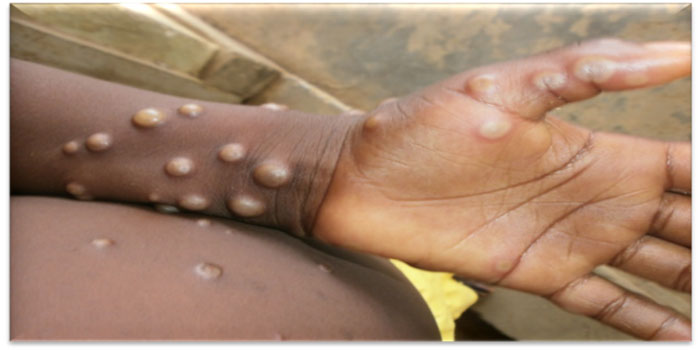Can Contaminated Surfaces Facilitate The Spread Of Monkeypox?
Feb 24, 2024 By Madison Evans
The virus that causes monkeypox is extremely rare. The monkeypox virus, related to the smallpox virus, is responsible for this illness. Most cases of the disease occur in Africa, but there have also been reports of it in the United States. Close contact with respiratory secretions, such as saliva, mucus, or blood, from a person infected with monkeypox can spread the disease to a healthy person. It can also be applied when infected people come into contact with infected surfaces or objects, like used towels or clothing.
Viruses are not resistant to environmental factors like heat, sunlight, and disinfectants, so they are easily eradicated when exposed. As a result, getting monkeypox from touching something contaminated is unlikely to happen. However, good hygiene and cleaning and disinfection of potentially contaminated surfaces are still necessary to stop the virus's spread. Monkeypox is not particularly contagious compared to other respiratory infections like the common cold or influenza. Precautions should still be taken to prevent the spread of the virus, especially in high-incidence areas.
Can You Explain What Monkeypox Is?
The virus that causes monkeypox has only been identified in a handful of cases. It's like smallpox, eradicated in 1980, but it usually doesn't even make people sick. The disease, now commonly referred to as "monkeypox," was first observed in lab monkeys in 1958. Humans, however, are not immune. Although monkeypox is most common in Central and West Africa, it has been reported in other regions, including the United States. Monkeypox symptoms, such as fever, headache, muscle aches, and a rash, can appear anywhere from 3 to 12 days after exposure. In most cases, the rash will start on the face before spreading to the rest of the body and eventually becoming a scab. Complications from monkeypox can be life-threatening. In extreme cases, the virus can cause pneumonia, inflammation of the heart muscle, and even death.
How Is Monkeypox Transmitted?

Contact with respiratory secretions from an infected animal or person is monkeypox's most common transmission route. This can happen if you come into direct contact with an infected person by touching or shaking their hand or breathing in their respiratory droplets. The transmission of monkeypox can also occur through contact with infected bodily fluids, such as blood, or with objects contaminated with such fluids. This can happen if someone comes in contact with an infected person's blood, mucus, or other bodily fluids and then touches their mouth, nose, or eyes.
Is It Possible For Monkeypox To Spread Through Contaminated Surfaces?
Although this is not the most common way for monkeypox to be transmitted, there is evidence that it can be spread through contact with contaminated surfaces. The virus is thought to survive for a short period on surfaces like clothing, bedding, or other objects and to be transmitted to a person if they touch these contaminated surfaces and then touch their mouth, nose, or eyes. However, direct contact with respiratory secretions or bodily fluids poses a higher risk of transmission than contact with contaminated surfaces. Even though the CDC says the risk of spreading monkeypox through touching infected surfaces is low, it does exist.
How Might Monkeypox Be Avoided?

The disease known as monkeypox has neither a cure nor a vaccine available. One can, however, take precautions to lessen the likelihood of becoming ill. Among these are:
- To lessen the likelihood of catching monkeypox or another contagious illness, one must practice good hygiene and wash one's hands frequently with soap and water.
- If you are in close contact with someone who has monkeypox or has recently traveled to an area where monkeypox is present, you should limit your communication with other people.
- To prevent contracting monkeypox while caring for a patient, it is recommended that you wear gloves, a gown, and a mask.
- If you have been in close contact with someone who has monkeypox or has recently traveled to an area, it is recommended that you disinfect any surfaces you may have touched.
Conclusion
Although less common than direct contact, monkeypox can be spread through contact with contaminated surfaces. The virus can live on hard surfaces for a short time and spread to other people if they touch those surfaces and then touch their eyes, nose, or mouth. Reasonable hygiene measures, such as frequent hand washing and surface disinfection, can help reduce the spread of monkeypox. You should also seek medical attention if you think you have been exposed to the virus and limit your contact with people who have it.







